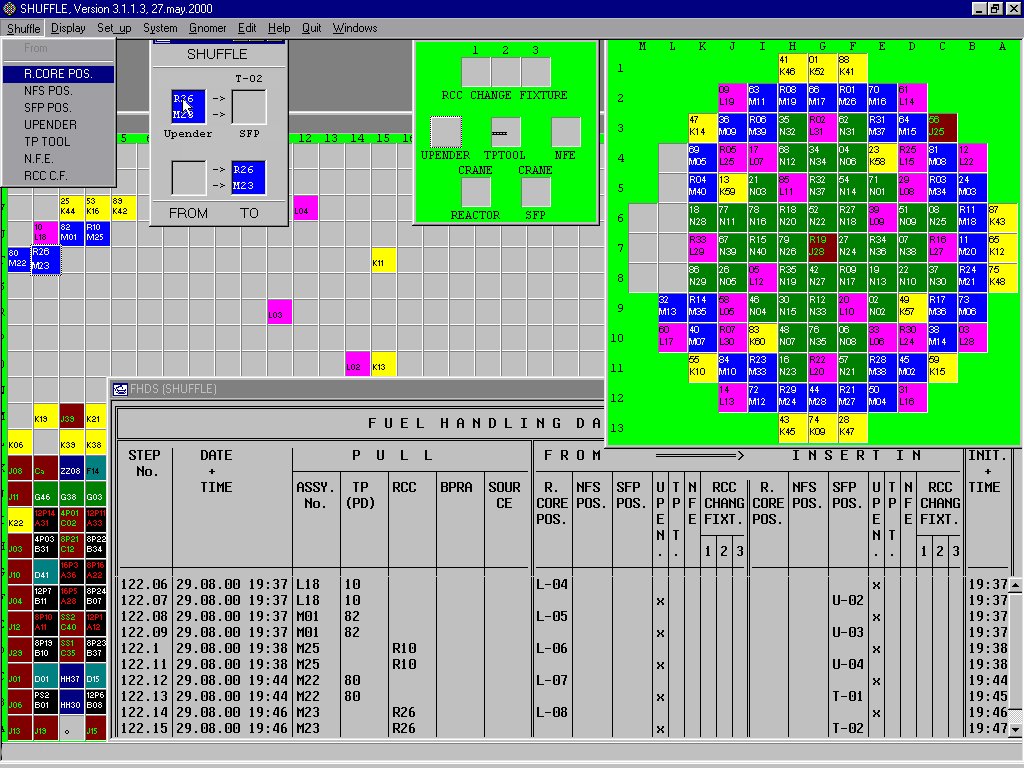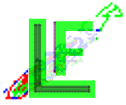

Si

 |
 |
Si |
|
 Computer Programs Developed at Reactor Physics Department[ CORD2, GNOMER, CORD2 (IAEA1226) CORD-2 is intended for core design applications of pressurised water reactors. The main objective was to assemble a core design system which could be used for simple calculations (such as frequently required for fuel management) as well as for accurate calculations (for example, core design after refuelling). Available from Nuclear Energy Agency (NEA) Data Bank Computer Program Services. See also CORD2 home
page. GNOMER (IAEA1271, RSIC CODE PACKAGE CCC-625) GNOMER is a program which solves the multigroup neutron diffusion equation in 1D, 2D and 3D cartesian geometry. The program is designed to calculate the global core power distributions (with thermohydraulic feedbacks), as well as power distributions and homogenized cross sections over a fuel assembly. Available from Nuclear
Energy Agency (NEA) Data Bank Computer Program
Services. See also GNOMER home
page. TRIGLAV (IAEA1370) A computer program for reactor calculations of mixed cores in TRIGA Mark II research reactor. It can be applied for fuel element burn-up calculations, for power and flux distributions calculations and for reactivity predictions. Available from Nuclear
Energy Agency (NEA) Data Bank Computer Program
Service. TRIGAC (IAEA1214) TRIGAP (RSIC CODE PACKAGE CCC-600) Program for calculating in cylindrical geometry flux and power distributions and burn-up of fuel elements in TRIGA reactors, taking into account temperature and xenon corrections. Temperature correction can be either linear, which is applicable for forced cooling, or of second order, which is used for natural convection. Available from Nuclear
Energy Agency (NEA) Data Bank Computer Program
Services. LOADF Certain reactor core parameters are not available to the reactor operator because they are difficult (or impossible) to measure. They can be provided by calculations, running on-line and simulating the operation of the reactor. This is the main purpose of the LOADF package.  Windows
version is also available. Windows
version is also available.DMR043/DMReS Digital reactivity DMR043 was designed on a PC computer. Numerical algorithms allowing the full non-homogeneous form of the point kinetics equations to be modelled. It is used at start-up tests at the Krsko NPP. SHUFFLE rogram package SHUFFLE was developed at "Jozef Stefan" Institute for preparing and monitoring the fuel loading operation at Krsko nuclear power plant. Using the package, planning and reloading operation is easier and safer. The program can create, edit and check steps in the shuffling plan. Summary about number and type of fuel elements at any location is generated. Program monitors fuel shuffling during reloading and compares it with the plan. See also SHUFFLE
home page. FAR Software package FAR (Fuel Assembly Register), developed at "J. Stefan" Institute, covers all aspects of the nuclear material accounting on a nuclear facility. FAR was originally designed for the Krsko NPP but, because of the generality in programming and modularity in structure, can be easily applied to any other nuclear facility. The main purpose of the package is to simplify control and updating of the fuel elements properties during NPP lifetime. Automatic data processing reduces possibility of errors and enables simpler implementation of a QA programme. See also FAR
home page. TRISTAN (IAEA1337) A computer program for calculating steady-state axial temperature distribution and flow velocity through a vertical coolant channel in low power TRIGA reactor core, cooled by natural circulation. Available from Nuclear
Energy Agency (NEA) Data Bank Computer Program
Services. PULSTRI (IAEA1228) A computer program for mixed core TRIGA Reactor pulse calculations (maximum temperature, prompt energy, peak power). Available from Nuclear
Energy Agency (NEA) Data Bank Computer Program
Services. TEMPUL (IAEA1338) A computer program for temperature distribution calculations in fuel element after the pulse. CEBIS (IAEA0920) CEBIS is a reactor physics code for calculations of multiplication factor, flux and power distributions in one dimensional cartesian, cylindrical and spherical geometry. It is intended for reactor physics calculations of stationary thermal multipying systems in two group diffusion approximation. Besides the direct solution, the program gives also the adjoint solution of the diffusion equation. FASVER (IAEA0835) FASVER2 solves the two-group two dimensional (x-y geometry) stationary diffusion equation of reactor physics. It is designed for the octant geometry of a typical PWR core with reflector. The adjoint equation may also be solved. FASVER4 performs the same calculations as FASVER2, but for one quadrant geometry of a PWR core. ENDSAM (NEA-1895) A code for random sampling and validation of covariance data of resonance parameters in ENDF-6 format. ENDSAM from a nuclear data library file of a chosen isotope in ENDF-6 format produces an arbitrary number of new files in ENDF-6 format which contain values of randomly sampled resonance parameters (in accordance with corresponding covariance matrices) in places of original values. Available from Nuclear
Energy Agency (NEA) Data Bank Computer Program
Services. Home page of new research reactor simulator is available here: Home page of The Research Reactor Simulator (RSS) and on GitHub. The research reactor simulator is a fast and robust PC based simulator of a small pool type research reactor developed for the purpose of:
See also WLUP Home Page for WIMS related programs (WILLIE) and libraries. |